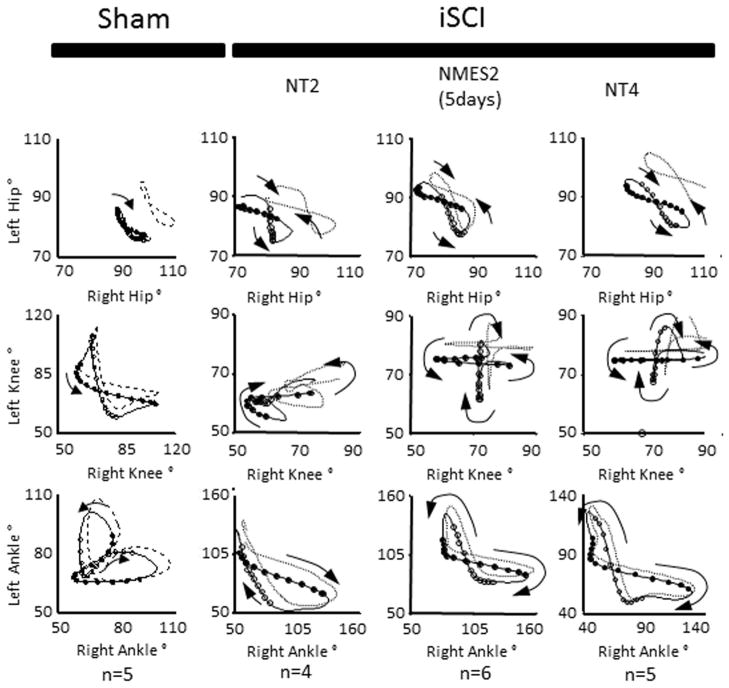Figure 2.
Sham and incomplete spinal cord injury (iSCI) intralimb coordination patterns. Averaged traces from 4–6 animals, 5–12 step cycles each. Sham: sham injured rats, NT2 and NT4: iSCI rats with no training tested two weeks and four weeks post injury respectively, NMES2: iSCI rats with five days of electrical stimulation therapy tested two weeks post injury. Sham and NT4 data derived from,71 NT2 and NMES2 derived from.64 Left joint angle plotted versus right joint angle. Symmetry in movement is indicated by symmetry about the diagonal. Symmetry is lost in the knee and ankle two weeks following injury. Symmetry is maintained if NMES therapy is added or an additional two weeks have elapsed. Note the simplification of the ankle–ankle pattern. In both the NMES and the NT4 animals, the knee–knee pattern shows a cruciform shape, with one joint moving while the opposite one remains stationary. Though the NMES2 and NT4 animals do not show the same trajectories as the sham animals, both groups were able to walk proficiently.

